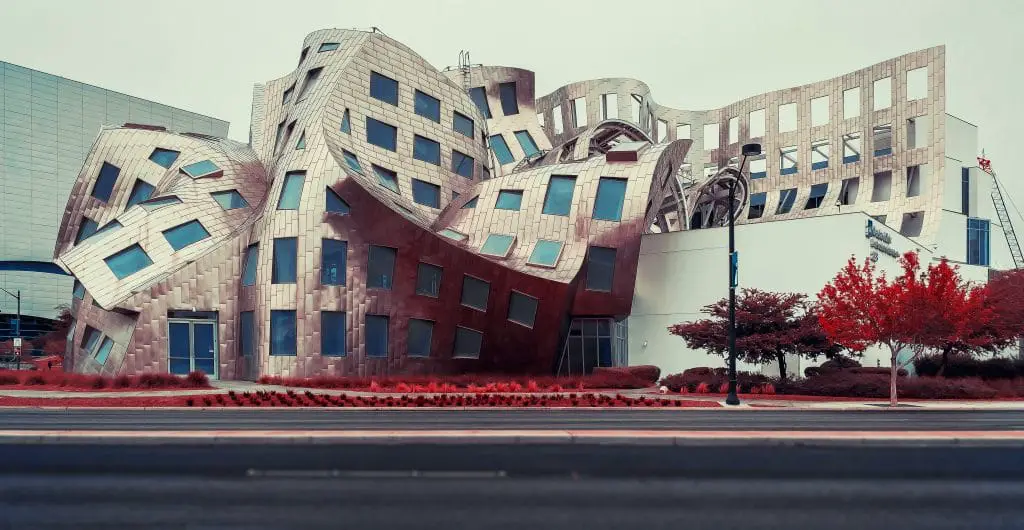Few people would think of architecture as being one of the Las Vegas strip’s most redeeming qualities, after all, aren’t most of its buildings either rip-offs or cheap imitations of those found in Europe or elsewhere? However, for many architects, behind the bright lights and flashing LED displays is a body of work that is as important to the field as any other on the globe. Here are four of the reasons that fans of architecture flock to the jewel of the Nevada Desert, just as sports fans or casino lovers do.
The Bellagio
Since it took $1.6 billion dollars to conceive in the mid-90s, The Bellagio has been know as one of the most luxurious casinos, sports betting shops and hotel resorts on the strip. Designed by Jon Jerde and DeRuyter Butler, the former being the go-to man for Las Vegas hotels at the time, the building has many architectural and artistic features you perhaps wouldn’t expect. First there are its famous fountains, set in an 8-acre man-made lake and fed by a freshwater well, which were utterly unique when the hotel opened. They consist of 1,200 nozzles and 4,500 lights and perform displays every 15 to 30 minutes depending on the time of day.
It’s not just outside that The Bellagio shines, inside there are also architectural flashes of genius from Peter Marino, who as far as we know is unrelated to Dolphins quarter-back Dan. Marino first shot to fame when he was commissioned to design a building in New York for Andy Warhol and has since become a specialist in designing luxury retail outlets. With many top high-end brands packing The Bellagio, his work can be found everywhere and is a welcome change to the functionality and austere nature of some other areas of the casino’s gaming tables, nightclubs and high intensity sports betting shops.
The Lou Ruvo Center for Brain Health
What sets the Lou Ruco Center apart in Las Vegas is that there’s not a casino chip or sports wager in sight. Frank Gehry is the architect behind this incredible building whose wavy metallic structure was a passion project born from Gehry’s close connection to the Wexler’s Hereditary Disease Foundation, whose board he sat on for thirty-five years. His mantra throughout the project was ‘Keep Memory Alive’, with his design making ingenious use of space and form to create one of Vegas’ most iconic structures.
Guardian Angel Cathedral
More known for its quickie weddings after the boxing or American football than for its fine religious institutions, Las Vegas does boast a beautifully designed place of worship called the Guardian Angel Cathedral. Paul R. Williams was a young up-and-coming black architect at the time and was commissioned to design what would become an iconic A-frame structure that instantly catches the eye of any Vegas visitor. Later in his career Williams would go on to design the homes of some of the strip’s biggest star performers, such as Frank Sinatra and Barbara Stanwyck and was revered for being one of the few black architects to break into this world.
City Center Las Vegas
This behemoth of a project, set over no less than 16,797,000 square feet, brought together a who’s who of architecture to build the Aria Resort and Casino as well as a multitude of other hotels and malls. Perhaps the most daring of all the buildings on this vast site is Crystals designed by the much-celebrated Daniel Libeskind.


